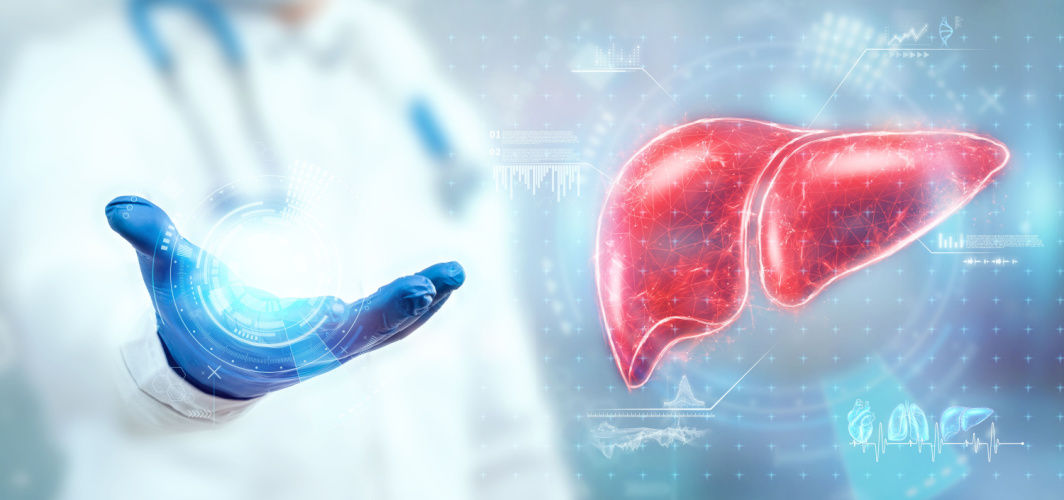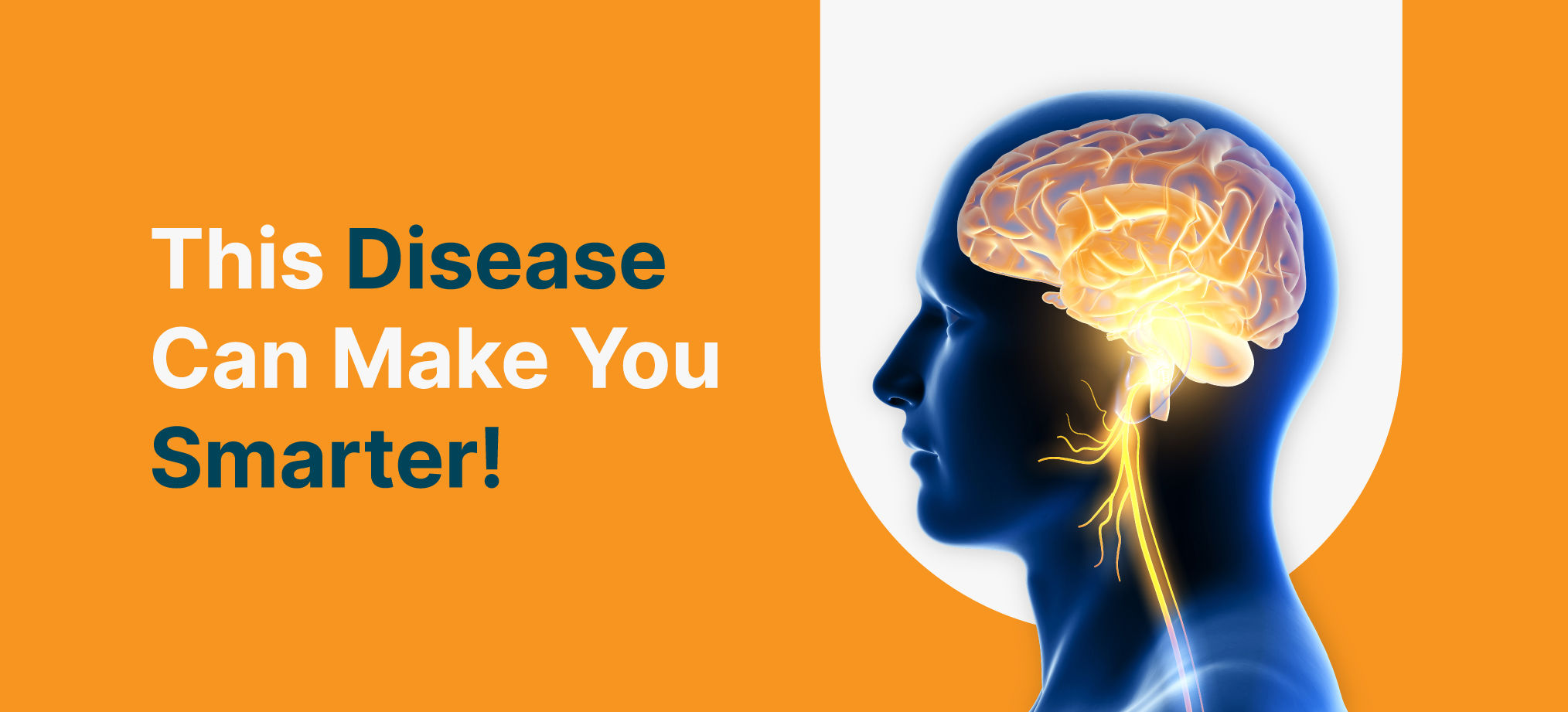General Health
Liver Disease
19 min read
By Apollo Pharmacy, Published on - 04 October 2023, Updated on - 05 October 2023
Share this article
0
0 like

The liver is an important organ that plays a vital role in maintaining our overall health. It performs various functions, including metabolism, detoxification and storage of nutrients. The liver is responsible for breaking down fats, proteins and carbohydrates, converting them into energy and other essential substances for the body. It also helps filter toxins from the blood and produces bile for digestion.
It's crucial to prioritise liver health to ensure our body functions optimally. In this article, we will explore the various aspects of liver health, including common liver conditions, causes, risk factors, new technologies, treatment approaches and lifestyle changes to help you maintain a healthy liver.
The Role of the Liver
The main function of the liver is to metabolise nutrients, store energy and detoxify harmful substances in the body. Understanding the role of the liver in maintaining overall health is essential for managing various medical conditions and ensuring proper bodily functions.
Exploring the anatomy and structure of the liver helps us understand its significance in maintaining our body's balance.
a. Anatomy and Structure of the Liver
The liver is one of the largest organs in the body, located in the upper right side of the abdomen. It is reddish-brown and consists of two main lobes, which are further divided into smaller lobes called lobules. Each lobule contains rows of liver cells called hepatocytes, as well as blood vessels and bile ducts.
b. Metabolic Functions: Carbohydrate, Protein and Fat Metabolism
The liver plays a crucial role in carbohydrate metabolism by storing glucose in the form of glycogen and releasing it when needed to maintain blood sugar levels. The liver also synthesises glucose from non-carbohydrate sources such as amino acids and glycerol through a process called gluconeogenesis.
The liver is involved in protein metabolism by producing certain proteins like albumin, which helps maintain osmotic pressure and transport nutrients in the blood. It also converts excess amino acids into urea, which is excreted through urine.
The role of the liver in digestion is primarily to produce bile, which is essential for the emulsification and breakdown of fats in the small intestine, aiding in their absorption. In terms of fat metabolism, the liver synthesises cholesterol and triglycerides (lipids), as well as metabolises fatty acids for energy production.
c. Detoxification and Toxin Removal
The liver plays a vital role in detoxifying harmful substances that enter our body, including drugs, alcohol and environmental toxins. It accomplishes this through various enzymatic reactions that transform these toxins into less harmful or water-soluble compounds for elimination. Additionally, the liver filters out old or damaged red blood cells, converting their pigments into bile.
d. Synthesis of Essential Proteins and Enzymes
The liver is responsible for synthesising many essential proteins and enzymes required for various bodily functions. These include clotting factors like fibrinogen and prothrombin, which help in blood coagulation. It produces albumin, a protein responsible for maintaining fluid balance in tissues.
Furthermore, the liver synthesises enzymes involved in drug metabolism, which affect how medications are broken down and utilised by the body.
Types of Liver Diseases
Liver disease is a broad term that encompasses various conditions affecting the liver's structure and function. It is essential to understand the different types of liver problems and their risk factors to prevent, diagnose and manage these conditions effectively.
a. Fatty Liver Disease (NAFLD/NASH)
Fatty liver disease, also known as NAFLD (non-alcoholic fatty liver disease), is one of the most common liver diseases globally, affecting millions of people in India (prevalence: 9–30%). NAFLD is characterised by excessive fat accumulation in the liver. It can progress to non-alcoholic steatohepatitis (NASH), which occurs when fat buildup causes inflammation and damage to the liver, leading to scarring. Risk factors include obesity, type 2 diabetes, high cholesterol or triglycerides, metabolic syndrome, and rapid weight loss.
b. Viral Hepatitis (A, B, C, D, E)
Hepatitis refers to the inflammation of the liver and can be caused by various viruses, including hepatitis A, B, C, D and E. Risk factors include contaminated food or water (hepatitis A and E), unprotected sex or sharing needles (hepatitis B and C), blood transfusions (hepatitis B and C) and mother-to-child transmission (hepatitis B).
c. Cirrhosis and Liver Fibrosis
Cirrhosis is another liver problem that occurs when the liver is scarred due to long-term damage from various factors such as viral hepatitis, alcohol abuse, fatty liver disease or autoimmune conditions. Liver fibrosis is the initial stage of cirrhosis, which results in an accumulation of fibrous tissue in the liver. Risk factors include chronic alcohol abuse, chronic viral hepatitis infections, fatty liver disease, autoimmune hepatitis and genetic disorders.
d. Liver Cancer (Hepatocellular Carcinoma)
Hepatocellular carcinoma is the most common type of primary liver cancer. It usually develops in individuals with underlying conditions such as chronic viral hepatitis B or C, cirrhosis and fatty liver disease. Other risk factors of liver cancer may include excessive alcohol consumption, smoking, obesity and exposure to chemicals.
e. Alcoholic Liver Disease
Alcoholic liver disease results from excessive alcohol consumption leading to liver inflammation and damage. Heavy and long-term alcohol consumption is the major risk factor for alcoholic liver disease.
f. Haemochromatosis and Wilson's Disease
Haemochromatosis is a genetic disorder where the body absorbs excessive iron, leading to iron buildup in various organs, including the liver. Wilson's disease is a rare inherited disorder that causes copper to accumulate in the liver, brain, and other organs. Copper buildup causes liver damage and may lead to jaundice, liver failure or neurological symptoms.
g. Gilbert's syndrome
Gilbert's syndrome is a benign genetic condition characterised by elevated levels of bilirubin (a waste product from the breakdown of red blood cells) in the blood, which can lead to occasional mild jaundice and fatigue. It typically does not cause any serious health problems. Individuals with Gilbert's syndrome often have a decreased ability to process bilirubin, resulting in its buildup and causing a yellowish pigment of the skin and eyes.
Causes and Risk Factors of Liver Disease
Liver diseases can have various causes, including lifestyle factors, viral infections, genetic predisposition and exposure to environmental toxins. Let's explore some of the common causes and risk factors.
- Excessive Alcohol Consumption: The consumption of alcohol in excessive amounts can cause significant damage to the liver. Chronic alcohol abuse leads to inflammation, scarring (cirrhosis) and even liver failure.
- Hepatitis Virus Infections: Hepatitis viruses, such as hepatitis A, B and C, can cause inflammation of the liver and lead to serious liver diseases. Hepatitis C, in particular, can progress to chronic infection and may result in liver cirrhosis or even liver cancer if left untreated. Vaccinations are available for hepatitis A and B, while effective antiviral treatments are available for hepatitis C.
- Unhealthy Diet and Obesity: A diet high in saturated fats, refined carbohydrates and added sugars can contribute to the development of NAFLD. NAFLD is closely associated with obesity and metabolic syndrome. Maintaining a balanced diet that includes fruits, vegetables, whole grains, lean proteins and healthy fats is essential for preventing liver diseases.
- Genetics and Family History: Some individuals may have an inherited predisposition to certain liver diseases such as hereditary haemochromatosis. If you have a family history of liver disease, it is important to speak with your healthcare provider for appropriate screening and management strategies.
- Medications and Drug-Induced Liver Injury: Certain medications, such as acetaminophen (paracetamol) in high doses, can cause liver damage. Additionally, herbal supplements and alternative remedies may also have hepatotoxic effects. It is vital to follow medication guidelines, avoid self-medication, and inform your healthcare provider of any alternative remedies you are taking.
- Autoimmune Conditions: There are different types of autoimmune diseases, such as autoimmune hepatitis and primary biliary cholangitis, which can lead to chronic inflammation in the liver. These autoimmune conditions occur when the immune system attacks healthy liver cells by mistake. It can lead to progressive liver damage if left untreated. The exact cause of autoimmune hepatitis is not fully understood, but genetic and environmental factors may play a role.
Certain studies have shown that there might be an association between fatty liver and alopecia areata, an immune-mediated nonscarring hair loss disorder with multiple subtypes. It was observed that fatty liver was more frequent in patients with alopecia areata than controls, without statistically significant differences.
- Environmental Toxins: Exposure to certain environmental toxins can contribute to liver diseases. Chemicals such as aflatoxins present in contaminated food, industrial solvents and pollutants can damage the liver.
Signs and Symptoms of Liver Disease
Being aware of the signs and symptoms of liver disease is crucial to seek medical attention promptly. Here are some key liver problem symptoms to watch out for:
a. Jaundice and Yellowing of Skin
One of the most noticeable signs of liver disease is jaundice, which causes a yellowish tinge of the skin and sclera of the eyes. This occurs when the liver is unable to effectively filter bilirubin, a yellow pigment produced by the breakdown of red blood cells.
b. Fatigue and Weakness
Liver disease can cause fatigue and weakness due to the liver's inability to process toxins efficiently. As a result, individuals may feel constantly tired.
c. Abdominal Pain and Swelling
Liver disease can lead to abdominal pain and swelling, as the liver becomes enlarged or inflamed. This can cause discomfort and a feeling of heaviness in the upper right side of the abdomen.
d. Changes in Urine and Stool Colour
Liver disease can affect the colour and consistency of urine and stool. Urine may appear dark or orange, while stools may become pale or clay-coloured. These changes occur due to impaired bile production and excretion.
e. Digestive Issues
Liver disease can disrupt the normal digestive process, leading to symptoms such as nausea, vomiting and diarrhoea. These gastrointestinal disturbances are often accompanied by a loss of appetite.
f. Fluid Retention and Swelling
In advanced stages of liver disease, fluid retention, known as oedema, may occur. This can result in swelling in the legs, ankles and abdomen. The accumulation of fluid is due to decreased production of albumin, a protein responsible for maintaining fluid balance in the body.
It's important to note that these signs and symptoms can vary depending on the specific type and stage of liver disease. Some individuals may not experience any symptoms until the disease has progressed significantly.
- Fatty Liver Symptoms: These symptoms can vary, but they often include fatigue and discomfort in the upper right abdomen. In more advanced cases, individuals may also experience unexplained weight loss and jaundice, indicating the need for medical evaluation and potential lifestyle changes.
- Liver Cancer Symptoms: The symptoms might be subtle in the early stages, but they may include unexplained weight loss and abdominal pain. As the disease progresses, more pronounced symptoms like jaundice, swelling in the abdomen and easy bruising may become evident, necessitating prompt medical attention.
- Liver Infection Symptoms: The symptoms can range from mild to severe and may include fatigue and abdominal discomfort. In some cases, individuals with liver infections may also experience jaundice, dark urine and clay-coloured stools, indicating the need for a thorough medical evaluation and appropriate treatment.
- Liver failure symptoms: These symptoms can be serious and should not be ignored. Common signs of liver failure include jaundice, confusion and abdominal swelling. It is essential to seek immediate medical attention if these symptoms arise, as liver failure can be life-threatening.
Diagnosis and Screening of Liver Disease
Diagnosing and assessing liver diseases is crucial for determining the appropriate treatment plan. Healthcare professionals use a combination of tests and assessments to evaluate the functioning of the liver and identify any underlying conditions. Here are some common diagnostic methods used:
a. Liver Function Tests (LFTs)
These blood tests measure the levels of various enzymes and proteins in the blood, which can indicate liver damage or dysfunction. The most commonly measured enzymes include alanine aminotransferase (ALT) and aspartate aminotransferase (AST). Elevated levels of these enzymes may suggest liver inflammation or injury.
b. Imaging Techniques
Various imaging techniques can provide detailed images of the liver and help identify any abnormalities. Ultrasound is often the first imaging modality used since it is non-invasive and readily available.
Magnetic resonance imaging (MRI) and computed tomography (CT) scans may be used for further evaluation, providing more detailed information about the liver's structure and any potential tumours or lesions.
c. Biopsy and FibroScan
In certain cases, a liver biopsy may be necessary to obtain a small sample of liver tissue for analysis. This procedure helps determine the extent of liver damage and identify specific conditions such as cirrhosis or hepatitis. However, biopsies carry some risks and are not suitable for everyone.
An alternative to biopsy is a FibroScan, which uses ultrasound technology to assess liver stiffness and fibrosis without the need for an invasive procedure.
d. Viral Load and Hepatitis Serology
For individuals with suspected viral hepatitis, testing viral load and serology is essential for identifying the specific virus causing the infection. These tests help differentiate between various types of hepatitis, such as hepatitis A, B, C, D or E. Understanding the viral load can also guide treatment decisions and monitor the effectiveness of antiviral therapy.
The choice of diagnostic tests may vary depending on the individual's symptoms, medical history and risk factors.
- Fatty Liver Diagnosis: This typically involves a combination of medical history, physical examination, blood tests and imaging studies such as ultrasound or a CT scan, allowing healthcare professionals to assess the extent of fat accumulation in the liver and determine the appropriate course of action.
- Liver Cirrhosis Diagnosis: The Cirrhosis diagnosis involves a comprehensive evaluation, including blood tests to assess liver function and imaging studies like a CT scan or MRI to evaluate the liver's structure. Additionally, a liver biopsy may be performed in some cases to confirm the liver cirrhosis diagnosis and assess the severity of liver damage.
- Liver Cancer Diagnosis: The diagnosis begins with a thorough evaluation, which may include imaging tests such as CT scans or MRIs to identify tumours in the liver. Additionally, blood tests to assess liver function and detect tumour markers along with a confirmatory biopsy, are necessary to determine the type and stage of the cancer.
Stages of Liver Disease
Whether it's fatty liver disease, hepatitis or cirrhosis, being aware of the different stages can help individuals take proactive steps towards improving their liver health. Let's delve into each stage and learn about their characteristics and implications.
a. Stages of Fatty Liver Disease
Fatty liver stages begin with simple hepatic steatosis and can progress to NASH. Monitoring these fatty liver stages is crucial to prevent complications and manage the condition effectively.
- Simple Steatosis: This is the initial stage of fatty liver disease, where excess fat accumulates in the liver cells (hepatocytes). In most cases, this stage does not cause any significant liver damage. However, if left untreated or not managed properly, it can progress to more severe stages.
- NASH: NASH is a more advanced stage of fatty liver disease characterised by inflammation and liver cell damage. Unlike simple steatosis, NASH can lead to complications such as fibrosis and cirrhosis. Individuals with NASH may experience fatigue, abdominal pain and elevated liver enzymes.
b. Stages of Hepatitis
- Acute Infection: During the acute phase of hepatitis, individuals may exhibit flu-like symptoms such as fatigue, jaundice, dark urine and nausea. With proper medical intervention and rest, most people recover from acute hepatitis within a few weeks or months.
- Chronic Hepatitis: If hepatitis persists for more than 6 months, it is considered chronic. If not managed appropriately, Chronic hepatitis can lead to progressive liver damage over time. It increases the risk of developing complications like cirrhosis and liver cancer.
Cirrhosis and Complications
Liver cirrhosis stages progress from mild fibrosis to advanced scarring, with each stage carrying varying degrees of liver damage and potential complications.
- Portal Hypertension: Scarring obstructs blood flow through the liver, leading to increased pressure in the portal vein. This can cause the development of varices (swollen veins) in the oesophagus or stomach, which may rupture and result in life-threatening bleeding.
- Ascites: The accumulation of fluid in the abdominal cavity is a common complication of cirrhosis. Ascites can cause abdominal distension, discomfort and difficulty in breathing.
- Hepatic Encephalopathy: In cirrhosis, the liver may struggle to filter toxins from the bloodstream, leading to a buildup of ammonia and other harmful substances in the brain. This can result in hepatic encephalopathy, a condition characterised by confusion, cognitive impairment and even coma.
- Liver Cancer: Chronic inflammation and scarring in the liver increase the risk of developing liver cancer. Hepatocellular carcinoma (HCC) is the most common type of primary liver cancer and often occurs in the setting of cirrhosis. Stage 4 liver cancer is an advanced stage where the cancer has spread extensively to other organs or distant sites in the body, making it difficult to treat with curative intent.
Managing Complications of Liver Disease
Complications of liver disease require careful management. Understanding how to address these complications is essential to improving overall liver health and minimising the impact of the disease.
a. Ascites and Paracentesis
To manage ascites, your doctor may prescribe diuretics to promote urine output and reduce fluid retention. In severe cases, paracentesis may be necessary. Paracentesis is a procedure that involves removing excess fluid from the abdomen to relieve symptoms such as abdominal discomfort and difficulty in breathing. This procedure is typically performed using ultrasound guidance to ensure safety and accuracy.
b. Hepatic Encephalopathy
Management of hepatic encephalopathy involves managing the underlying cause of hepatic encephalopathy, such as reducing ammonia production in the gut through dietary modifications and lactulose or rifaximin administration. A low-protein diet may be recommended to minimise ammonia production. In severe cases, hospitalisation may be necessary for close monitoring and more extensive management.
c. Portal Hypertension and Varices
Lifestyle modifications, such as avoiding alcohol, controlling obesity and engaging in regular exercise, can help improve liver health and manage portal hypertension. Medications may be prescribed to reduce portal pressure and prevent variceal bleeding. In severe cases, endoscopic procedures such as band ligation or sclerotherapy may be performed to treat varices and prevent bleeding.
d. Liver Cancer Treatment Options
Treatment options for liver cancer depend on the stage and severity of the cancer. Treatment options include:
- Surgical Resection: Surgically removing the tumour from the liver is considered the best option if the cancer is localised and the patient is in good overall health.
- Liver Transplantation: In cases where the tumour cannot be surgically removed, a liver transplant may be necessary. This procedure involves replacing the diseased liver with a healthy one from a donor.
- Ablation Therapy: This involves using heat or cold to destroy cancerous cells in the liver. Techniques such as radiofrequency ablation or cryoablation are commonly used.
- Chemoembolisation: This involves injecting chemotherapy drugs directly into the blood vessels that supply the tumour, cutting off its blood supply.
- Targeted Therapy: Certain medications can target specific mutations or proteins present in cancer cells, inhibiting their growth.
Treatment Options for Liver Disease
Liver disease, including fatty liver disease and liver cirrhosis, requires a comprehensive treatment approach. Treatment options vary depending on the type and severity of liver disease. Here are some of the treatment options available:
a. Dietary Modifications
A low-fat, low-sugar and balanced diet is crucial for managing liver disease. Avoiding processed foods, alcohol and sugary beverages is essential to reduce further damage to the liver. Instead, focus on consuming plenty of fruits, vegetables, lean proteins and whole grains. Fatty liver treatment primarily involves lifestyle modifications, including a healthy diet, engaging in regular exercise and maintaining a healthy weight.
b. Medications for Hepatitis and Symptom Relief
Depending on the underlying cause of liver disease, medications may be prescribed to manage symptoms and slow down the progression of the disease. These medications may include antiviral drugs, immunosuppressants or corticosteroids.
For example, antiviral drugs are used to treat viral hepatitis infections. For fatty liver disease treatment, certain medications may also be prescribed to control underlying conditions such as diabetes or high cholesterol. For liver cirrhosis treatment, medications may be prescribed to reduce fluid buildup, manage infections or control bleeding.
c. Antiviral Therapy and Immunisations
If left untreated, Hepatitis B and C can lead to severe liver damage. Antiviral therapy helps in suppressing the virus and preventing further complications. Additionally, immunisations against hepatitis A and B are recommended to protect individuals with liver disease.
d. Liver Transplantation
In advanced cases of liver disease, such as end-stage liver cirrhosis or acute liver failure, a liver transplant may be necessary. This procedure involves replacing the diseased liver with a healthy one from a deceased or living donor.
Preventing Liver Disease
How to avoid liver disease? Liver diseases can be prevented by adopting a healthy lifestyle and making smart choices. Effective strategies to prevent liver diseases and protect your liver health include:
- Maintain a Healthy Weight: Excess weight, especially around the waistline, increases the risk of developing fatty liver disease. How to prevent fatty liver? Fatty liver prevention involves maintaining a healthy lifestyle, including a well-balanced diet low in saturated fats and sugars, regular physical activity and limiting alcohol consumption.
- Eat a Balanced Diet: A diet rich in fruits, vegetables, whole grains, lean proteins and healthy fats can help keep your liver healthy. Avoid consuming excessive amounts of sugar, processed foods and saturated fats as they can contribute to liver damage.
- Limit Alcohol Consumption: Excessive alcohol intake is a major cause of liver diseases like cirrhosis. It is important to consume alcohol in moderation or avoid it altogether to protect your liver.
- Get Vaccinated: Hepatitis A and B vaccines are available and highly effective in preventing these viral infections. It is advisable to consult a healthcare professional for vaccination.
- Take Medications Responsibly: Certain medications, including over-the-counter drugs and herbal supplements, can cause liver damage if taken in excess or without professional guidance. How to prevent liver damage? Always follow the recommended dosage and consult your doctor before starting any new medication.
- Avoid Exposure to Toxins: Minimise your exposure to harmful chemicals and toxins, such as pesticides, aerosol products and toxic fumes. Use protective gear when working with such substances to safeguard your liver health.
In conclusion, understanding the importance of liver health is crucial for maintaining overall well-being. It is crucial to adopt a healthy lifestyle, including a balanced diet, regular exercise and limiting alcohol consumption. Regular check-ups and screenings can help in the early detection and prevention of liver diseases.
Additionally, staying informed about the latest guidelines and advancements in medical technologies can contribute to better management and treatment options. As we continue to learn more about the liver and its functions, it is essential to prioritise its health and take proactive measures to protect it. By doing so, we can lead healthier lives and reduce the risk of liver diseases.
Tags
- pruswurewrifradriuuprohuwroswithavowrumefrafruwriputrukegecligaspiclutrastanaspidrauuswaclethacidrodredrecralaliswogobricruhacrogubraslechofraphukoshuhiprucluweshiwinituwrarabenonewrokeh
General Health
Consult Top Hepatologists
View AllLeave Comment
Recommended for you

General Health
Gaining Weight Despite Eating Healthy? Check for Hormonal Imbalance with This Simple Test: Thyroid Test
Gaining weight despite a healthy diet? A thyroid test can reveal hormonal imbalances affecting your metabolism and energy levels, helping you take control of your health.

General Health
Here's Why You Are Always Bloated!
Have you ever had your stomach tight after eating a particular food? If so, you may be experiencing bloating. You can prevent bloating with simple changes to your food habits. Read along to find some interesting facts about bloating.

General Health
Surprising Yet True! This Disease Actually Makes You Smart!
Savant syndrome is a rare developmental disorder, where the person has certain exceptional talents or abilities. In many cases, the person has one specific skill, while sometimes, an individual can exhibit multiple extraordinary talents.
Subscribe
Sign up for our free Health Library Daily Newsletter
Get doctor-approved health tips, news, and more.
Visual Stories

Plant-based Foods That Are a Great Source of Iron
Tap to continue exploring
Recommended for you

General Health
Gaining Weight Despite Eating Healthy? Check for Hormonal Imbalance with This Simple Test: Thyroid Test
Gaining weight despite a healthy diet? A thyroid test can reveal hormonal imbalances affecting your metabolism and energy levels, helping you take control of your health.

General Health
Here's Why You Are Always Bloated!
Have you ever had your stomach tight after eating a particular food? If so, you may be experiencing bloating. You can prevent bloating with simple changes to your food habits. Read along to find some interesting facts about bloating.

General Health
Surprising Yet True! This Disease Actually Makes You Smart!
Savant syndrome is a rare developmental disorder, where the person has certain exceptional talents or abilities. In many cases, the person has one specific skill, while sometimes, an individual can exhibit multiple extraordinary talents.



